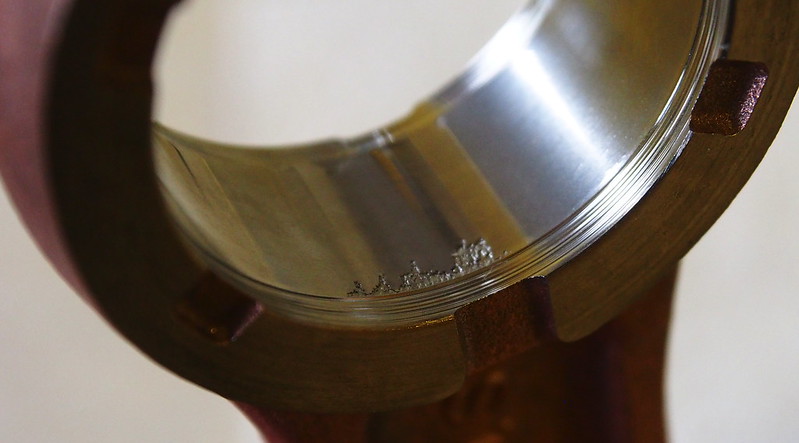Just not good Engineering practice.
Supporting the applied force directly by locking the sprockets is easier and safer all round. The sprockets are designed to transmit torque. The alternator rotor is not.
Multiplying or dividing by the primary drive or gearbox ratios is irrelevant for the torque being transmitted from one end of the crank from the other.
If you look at the wear marks on the big ends these built-up cranks twist under load and the wear occurs at one edge of the crank-pin/rod/roller as they are pushed out of parallel.


G
mike in idaho wrote:If it was that easy to twist a crank out of register it would get twisted every time you opened the throttle wide open. In first gear with the output shaft nut getting say, 50 foot pounds of torque, that torque figure would be divided by the ratio of first gear(2.788:1) then divided farther by the ratio of the primary drive(3.13:1)= 5.73 foot pounds at the alternator bolt. I think the crank will handle that.




